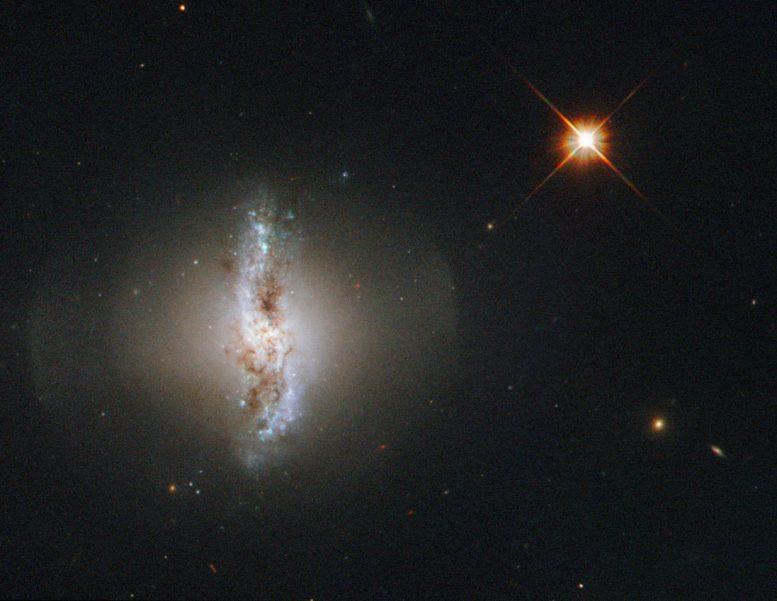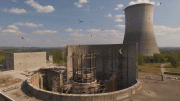
Arp 230 is a peculiar galaxy in the Atlas of Peculiar Galaxies. Its irregular shape is believed to be the result of a past violent collision with another galaxy, which might have led to the formation of its polar ring. Credit: ESA/Hubble & NASA; Acknowledgement: Flickr user Det58
This newly released Hubble image shows Arp 230, which also known as IC 51.
Arp 230 is a galaxy of an uncommon or peculiar shape, and is, therefore, part of the Atlas of Peculiar Galaxies produced by Halton Arp. Its irregular shape is thought to be the result of a violent collision with another galaxy sometime in the past. The collision could also be held responsible for the formation of the galaxy’s polar ring.
The outer ring surrounding the galaxy consists of gas and stars and rotates over the poles of the galaxy. It is thought that the orbit of the smaller of the two galaxies that created Arp 230 was perpendicular to the disc of the second, larger galaxy when they collided. In the process of merging the smaller galaxy would have been ripped apart and may have formed the polar ring structure astronomers can observe today.
Arp 230 is quite small for a lenticular galaxy, so the two original galaxies forming it must both have been smaller than the Milky Way.
A version of this image was entered into Hubble’s Hidden Treasures image processing competition by Flickr user Det58.









Galaxies could be spiral, globular or flat but this image of Arp230 is peculiar. Globular galaxies are under formation or death when it crumbles. Spiral galaxies are energetic and moving in spiral around its nucleus. Galactic cannibalism is common as we see Nebula Andromeda devouring its neighboring galaxies. The same fate is going on in our Milky way Galaxy trying to devour its neighbors Large and Small Magellanic cloud galaxies in action. Arp30 galaxy is at the end stage of ripping its prey galaxies and hence there is ring of gases around its pole. Finally they will all crumble into a spherical one and fall in an abyss of Black Hole. Thank You.